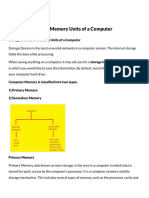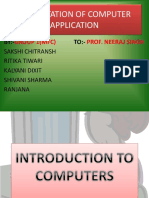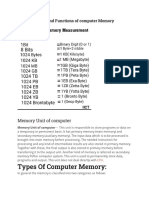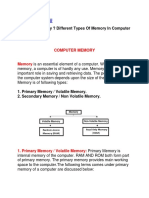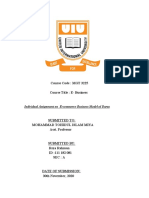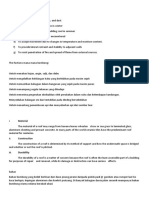0% found this document useful (0 votes)
190 views19 pages9 Memory Unit
The document discusses the importance of memory in computer systems, detailing various types of memory units such as RAM, ROM, and secondary storage devices. It explains the classifications of RAM (SRAM and DRAM) and ROM (PROM, EPROM, EEPROM), as well as secondary storage options like magnetic tapes, disks, and optical disks. Additionally, it highlights the characteristics and uses of these storage mediums, emphasizing their roles in data retention and retrieval.
Uploaded by
pankaj.sahu.cs24Copyright
© © All Rights Reserved
We take content rights seriously. If you suspect this is your content, claim it here.
Available Formats
Download as PDF, TXT or read online on Scribd
0% found this document useful (0 votes)
190 views19 pages9 Memory Unit
The document discusses the importance of memory in computer systems, detailing various types of memory units such as RAM, ROM, and secondary storage devices. It explains the classifications of RAM (SRAM and DRAM) and ROM (PROM, EPROM, EEPROM), as well as secondary storage options like magnetic tapes, disks, and optical disks. Additionally, it highlights the characteristics and uses of these storage mediums, emphasizing their roles in data retention and retrieval.
Uploaded by
pankaj.sahu.cs24Copyright
© © All Rights Reserved
We take content rights seriously. If you suspect this is your content, claim it here.
Available Formats
Download as PDF, TXT or read online on Scribd
/ 19
































